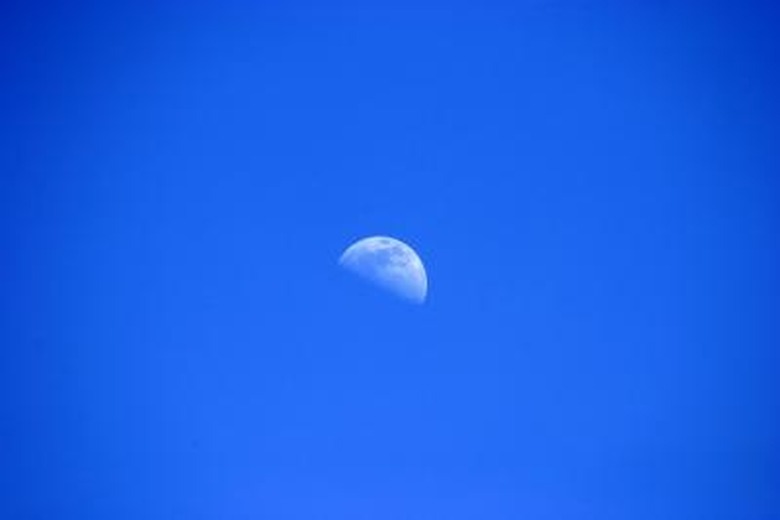Why Moon Phases Occur
Observing the moon from Earth, it is easy to see that it goes through a cycle of light and dark appearances. Different stages of this cycle are known as phases, and there are technical names for them. Explaining the moon phases requires an examination of the moon's orbital position in relation to the Earth and the sun.
The Moon's Orbit
The Moon's Orbit
Most people believe that the moon takes one month to orbit around the Earth. This is mostly (but not exactly) correct. The moon's orbit is explained scientifically by two different periodicities. The synodic period, also called lunation, is the time between when the exact same moon phase is observed by someone on Earth. This period lasts exactly 29.5305882 days. The sidereal period, also called the orbital period, is the actual time it takes the moon to orbit the Earth. This period lasts exactly 27.3217 days.
The difference in period lengths is accounted for by the movement of the Earth. Someone observing moon phases from Earth is observing from a platform that is also in motion. During the moon's revolution, the Earth has moved approximately 1/12 of it's own yearly revolution around the sun.
Moon Phases
Moon Phases
Moon phases describe how much and what parts of the moon are observed as light and shadow. As the moon proceeds through it's orbit, the change of phases is easily observed.
During a full moon phase, the entire moon is seen as light. During a new moon, the entire moon is seen as shadow. At first quarter and third quarter moon phases, one half of the moon is seen as light, and one half as shadow. The times in between are known as crescent and gibbous, as the moon's lighted or shadowed area takes on a crescent shape.
Cause of Moon Phases
Cause of Moon Phases
Just like Earth, half of the moon is lit by the sun, and half is in shadow at any given time. As the moon travels around the Earth, we see the moon from different angles, and thus can see different percentages of light and shadow.
When the moon is full, the moon is on the opposite side of the Earth from the sun. As a result, we can see the whole of the lit side of the moon. At new moon, exactly the opposite alignment exists, with the moon being between the Earth and the sun. At that point, we can only observe the shadowed side of the moon. At first and third quarter moons, the moon is at a 90 degree angle from the Earth and sun. We can see half of the lit side and half of the shadowed side. The crescent and gibbous periods are observed as the moon transitions between these points in its orbit.
Waxing vs. Waning; Crescent vs. Gibbous
Waxing vs. Waning; Crescent vs. Gibbous
There are four terms used to describe the "in between" moon phases: waxing, waning, crescent and gibbous.
Waxing is when the moon's lit area appears to be increasing, whereas waning is when the lit area appears to be decreasing. Crescent is when the moon appears less than half illuminated, and gibbous describes when the moon appears more than half illuminated.
Lunar Eclipse
Lunar Eclipse
An eclipse occurs at full moon phase when the Earth casts a shadow on the moon, temporarily making it go fully or partially dark. Partial eclipses occur several times per year, whereas a total eclipse occurs very infrequently. Eclipses are relatively short events, and you can observe over the course of a few hours the moon going from full to dark and back to full again.
References
Cite This Article
MLA
Williams, Christopher. "Why Moon Phases Occur" sciencing.com, https://www.sciencing.com/moon-phases-occur-5365874/. 24 April 2017.
APA
Williams, Christopher. (2017, April 24). Why Moon Phases Occur. sciencing.com. Retrieved from https://www.sciencing.com/moon-phases-occur-5365874/
Chicago
Williams, Christopher. Why Moon Phases Occur last modified March 24, 2022. https://www.sciencing.com/moon-phases-occur-5365874/
